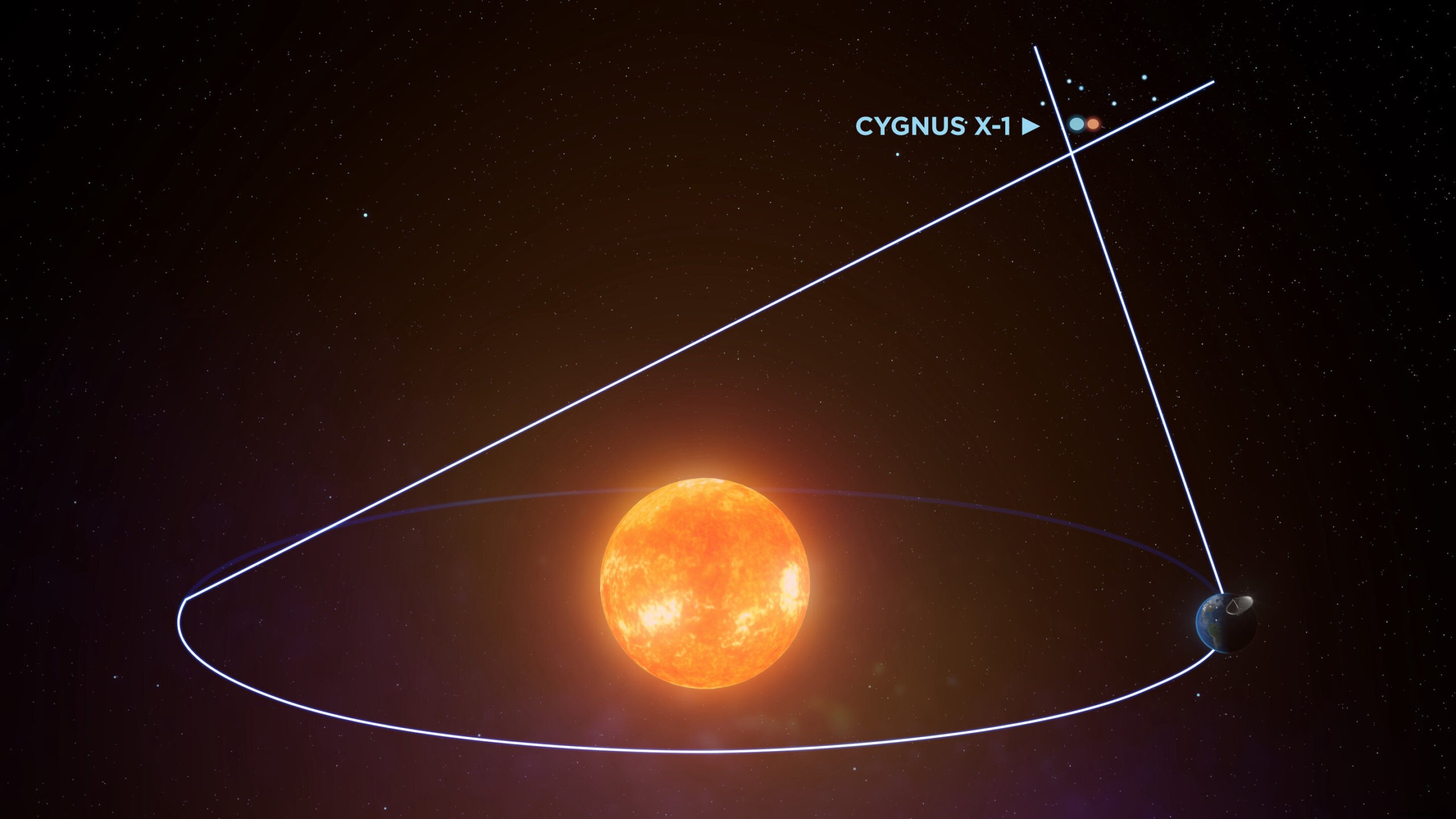A Study recent published in the journal Science reveals that the Cygnus X-1 system contains the most massive stellar-mass black hole ever detected without the use of gravitational waves.
Cygnus X-1 is a binary system hosting a supergiant star, around which a stellar-mass black hole evolves. Discovered in 1964 thanks to a pair of Geiger counters carried aboard a sub-orbital rocket launched from New Mexico, this is the first clearly identified black hole candidate.
For the record, the object had been the subject of a famous scientific bet between physicists Stephen Hawking and Kip Thorne, Hawking betting in 1974 that it was not not a black hole. Finally, the latter conceded his defeat in 1990 .
Recently, a team of astronomers took another look at the object to obtain more accurate parallax measurements . To do this, the researchers observed a complete orbit of the black hole around the supergiant (about six days) thanks to the Very Long Baseline Array, a radio telescope made up of ten parabolic antennas distributed across the United States. They then compared these data with those collected during observations made of the same system with the same network of telescopes in 2011.
"If we can see the same object in different places, we can calculate its distance from us by measuring how far the object appears to move relative in the background “, explains James Miller-Jones, of Curtin University. "If you hold your finger in front of your eyes and look at it one eye at a time, you will notice that your finger seems to jump from place to place. It's exactly the same principle “.

Thanks to this work, the researchers were able to determine that the system is actually further away than previously thought:7,200 light-years not 6,700 light years. It also appeared that this black hole was moving faster than any other black hole found to date. Its speed was very close to the speed of light. Finally, it is also significantly more massive.
“The black hole in the Cygnus X-1 system began life as a star about sixty times the mass of the Sun and collapsed there is tens of thousands of years old" , continues the researcher. “These new observations tell us that the black hole today is more than twenty times more massive than our Sun, about 50% heavier compared to previous estimates “.
This black hole is so massive that it calls into question how they can form. Stars regularly lose mass due to stellar winds. To make a stellar-mass black hole that heavy, then, we need to reduce the amount of mass that bright stars lose over their lifetime.